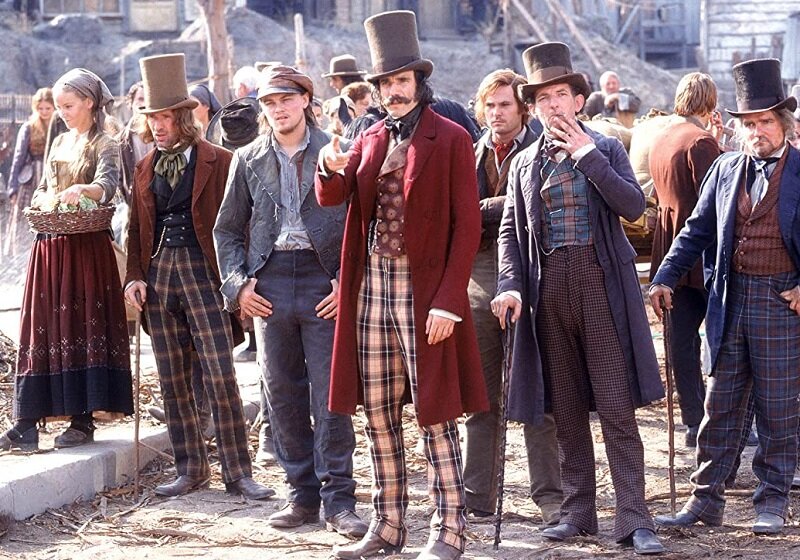Does Gangs of New York Hold Up?
Gangs of New York. Image courtesy of Buena Vista
I recently re-visted Martin Scorsese’s 2002 period epic Gangs of New York and it left me reflecting on the age-old question: almost two decades since its release, does the movie hold up? And the long and the short of it is, not really.
Gangs of New York was the beginning of Martin Scorsese’s DiCaprio Phase - a period in which he made four straight films featuring the actor. It is an epic re-telling of New York’s colorful and chaotic boomtown glory days, as corrupt politicians, roving gangs, immigrants, pickpockets, civil war, money and greed all swirled together in a hulking, breathing, steaming vision of the American Dream. It is mainly the story of Bill the Butcher (played by Daniel Day Lewis) and the Five Points neighborhood, a notoriously crime-ridden slum. Essentially, Gangs of New York is a stylized 3-hour urban history lesson.
Here’s what you have to understand about Gangs of New York. One, it had a long and tortured production and its release was delayed by the 9/11 attacks. With its release pushed back a year, and the country still mourning and coming to terms with what had happened, the film likely tried to carry that little bit of extra hagiography for New York. And it is, as many Scorsese films are, a celebration of New York the city, the people, the history, the pageantry and the nuttiness.
The other thing you need to understand is how the movie fits into the historical trajectory of digital effects. Released in 2002, this was the era when studios and filmmakers were really starting to open the throttle on what CGI could do. But Scorsese is old school, so he actually had the entire set of New York’s Five Points built on a sound stage and most of the film is shot the old fashioned way, practical and with real sets and real crane shots and real crowds. I recall a contemporary interview where Scorsese recounted a conversation with George Lucas, and Lucas was explaining that he could have built all the sets and recreated mid-19th century New York digitally. But Scorsese wasn’t having it. Because he is old school.
So in many ways the key to understanding this film is understanding its context, and its roots. It is a film that celebrates New York’s colorful past, made by an old school filmmaker steeped in and respectful of cinematic history and tradition. And the commitment to spectacle is great. The commitment to the idea is great. Daniel Day Lewis is great. Some of the stylistic flourishes are great. But occasionally they also sail over the top into, I don’t know I guess you might call it Baroque territory. It’s a bit self-indulgent, a bit too theatrical, a bit too in love with its own lore and the myth of the city it’s trying breathe life into.
It’s also quite long, given that it’s a rather basic revenge plot. 3 hours is a tad much. The world Scorsese has created here is not that good or immersive that we necessarily want to hang around in it for 1/8 of a day (but maybe here I am revealing my bias having been born and raised in Los Angeles). I liked it. Sort of. But not as much as the film itself loves New York and wants us to love it too. And that, ultimately, is what lets it down a bit.




